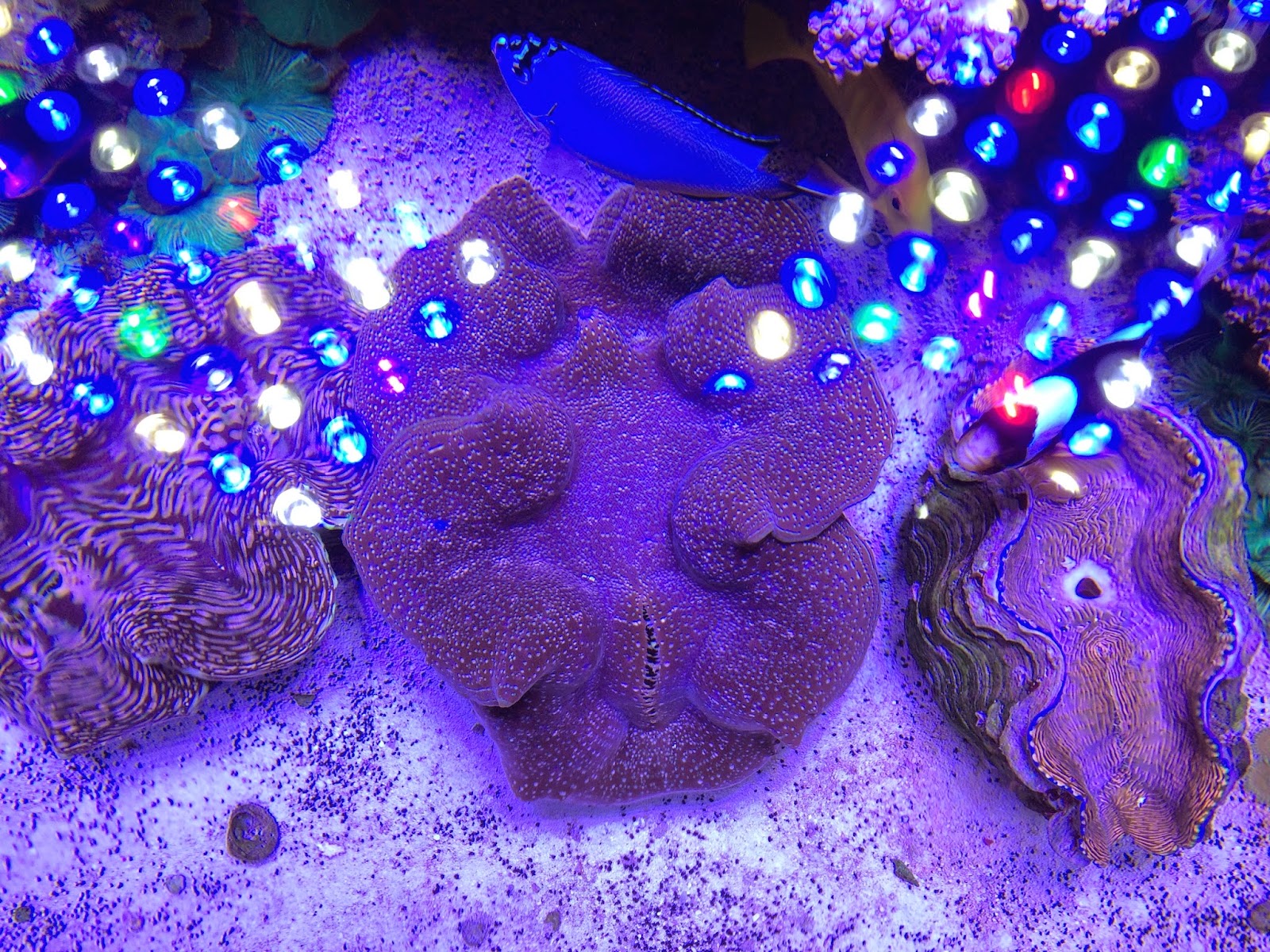One of the most commonly asked questions is the choice of lighting. What’s appropriate for your critters? What’s the best color temperature combination to bring out those colors? All lights seem so expensive, can I just DIY?
First, I must say that without proper training in light, physics, and electrical, everything I am going to discuss is entirely based on observation and real life experience.
 |
| LED light reflecting from the surface |
Currently some there are many options for aquaria lighting. Among some of the less expensive but least light output are:
Regular T7 florescent tubes, incandescent bulbs, power compact lights
These lights are suitable for fish only aquaria or some of the non-photosynthetic or least light demanding soft corals. But in most cases will not provide enough energy for higher end corals and inverts to thrive
Some of the more sophisticated lightings are:
VHO T5 florescent tubes, Metal Halide bulbs, and LED lights
These lights tend to have a higher cost and drains more electricity, but can sustain some of the most light hungry creatures such as small polyp stony corals (SPS), large polyp stony corals (LPS), clams, anemones, etc.
Another option is DIY- if you are skilled in electrical, you can also design and put together your own lights. You can find many light parts, ballasts that are suitable for your project. Warning, if you do not construct the light correctly it can result in fire.
There are many other aspects of lights such as PAR, light’s distance from the water surface, water depth, and light color temperature. We can save all them for the ensuing parts of this series.
In the mean time, there are some good readings I recommend from a couple reputable online livestock retailer:
Liveaquaria Light article
Pacific East Aquaculture Light article












